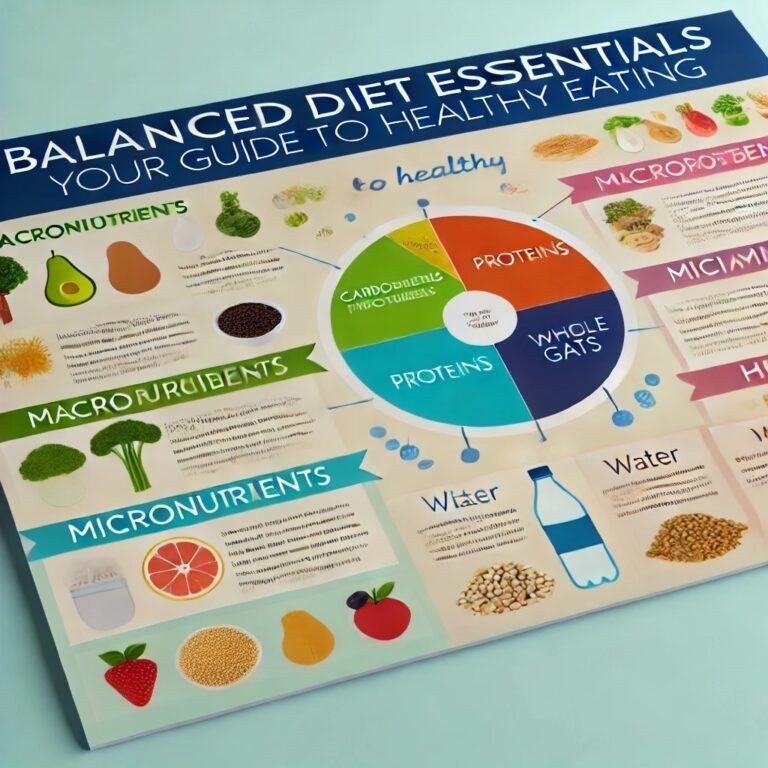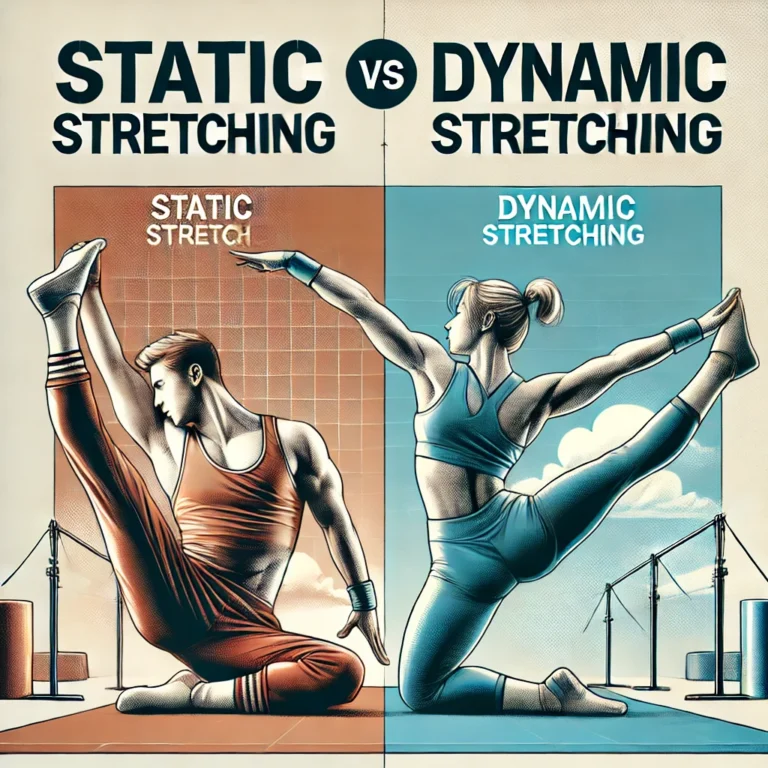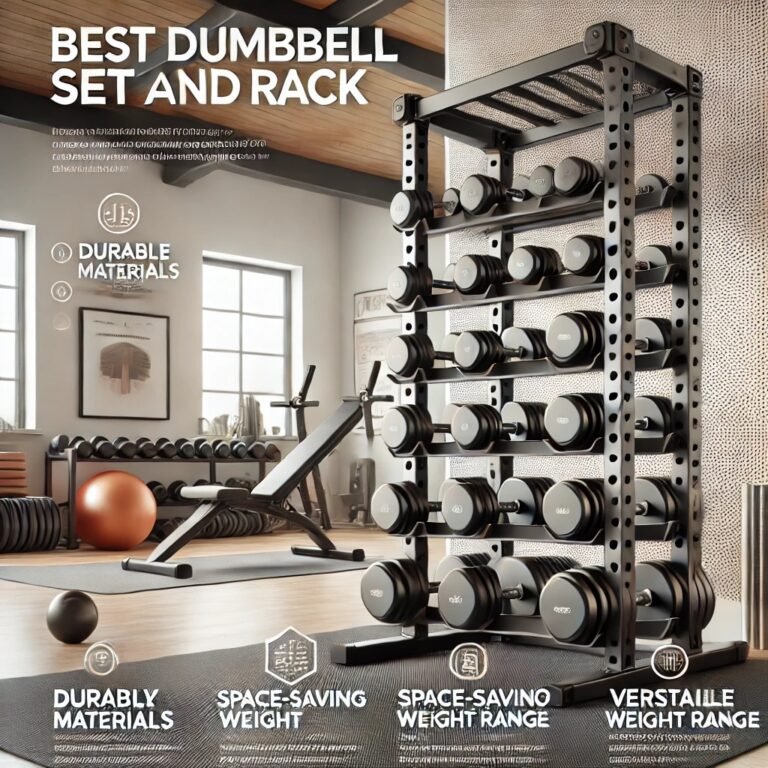Flexible dieting has taken the health and fitness world by storm, offering a refreshing approach to nutrition that prioritizes balance over restriction. In this guide, we’ll explore everything you need to know about flexible dieting, from understanding its principles to crafting efficient meal plans tailored to your goals. Whether you’re a seasoned dieter or just starting out, this guide will help you make informed choices while enjoying the foods you love.
What is Flexible Dieting?
Flexible dieting is a modern dietary approach that prioritizes flexibility and sustainability over rigid restrictions. At its core, flexible dieting revolves around meeting your individual macronutrient needs—protein, carbohydrates, and fats—while allowing for the inclusion of any food, as long as it fits within your daily targets. This means you can enjoy everything from nutrient-dense whole foods to occasional indulgences like pizza or ice cream without compromising your goals. It is also often referred to as “If It Fits Your Macros” (IIFYM),

Key Features of Flexible Dieting:
- Macronutrient Focus: The primary objective is to consume the right proportions of protein, carbohydrates, and fats to support your specific goals, such as weight loss, maintenance, or muscle gain.
- Balance and Moderation: Unlike traditional “clean eating” diets that may demonize certain foods, flexible dieting promotes a balanced approach. It encourages incorporating a variety of foods, recognizing that no single food is inherently “bad” or “good.”
- Customizable for Any Goal: Whether your aim is to lose weight, build muscle, or simply maintain your current physique, flexible dieting can be tailored to fit your lifestyle and preferences.
How It Works:
- Set Your Daily Calorie and Macro Targets: Begin by calculating your Total Daily Energy Expenditure (TDEE) and distributing your calories across protein, carbs, and fats based on your goals.
- Track Your Food Intake: Use tools like MyFitnessPal or Cronometer to log what you eat and ensure you’re meeting your targets.
- Make Room for Your Favourites: By planning your meals thoughtfully, you can allocate calories to include indulgences, keeping you satisfied and consistent.
Why Flexible Dieting Stands Out:
Flexible dieting offers a liberating perspective on nutrition. Instead of feeling deprived, you can embrace a lifestyle that aligns with your long-term health and fitness aspirations. This adaptability is what makes it one of the most sustainable dietary approaches for people of all backgrounds.
Calculating Your Energy Needs
Before embarking on flexible dieting, it’s crucial to understand how much energy your body requires daily. This foundational knowledge helps you determine your calorie intake and macronutrient targets, ensuring that your diet aligns with your specific health and fitness goals.
Why Calculating Energy Needs is Important
Calculating your energy needs is important because knowing the correct amount of food/ calories you need to consume so your mind and body can preform and stay focused throughout the day. It also identifies the correct amount of nutrients you need.
- Personalization: Everyone’s body is different. Calculating your energy needs tailors your diet to your unique metabolism and lifestyle.
- Efficiency: Helps in creating a diet plan that effectively supports weight loss, maintenance, or muscle gain.
- Balance: Ensures you’re consuming adequate nutrients to support overall health while achieving your goals.
Steps to Calculate Your Energy Needs

1. Determine Your Basal Metabolic Rate (BMR)
Your basal metabolic rate (BMR) is the number of calories your body needs at rest to maintain vital functions like breathing, circulation, and cell production.
- Methods to Calculate BMR:
- Online BMR Calculators: Input your age, gender, weight, and height for a quick estimate.
- Mifflin-St Jeor Equation: A widely accepted formula for more precise calculation.
- For Men:
BMR = (10 x weight in kg) + (6.25 x height in cm) – (5 x age in years) + 5 - For Women:
BMR = (10 x weight in kg) + (6.25 x height in cm) – (5 x age in years) – 161
- For Men:
- Example Calculation:
- A 30-year-old woman weighing 70 kg and 165 cm tall:
BMR = (10 x 70) + (6.25 x 165) – (5 x 30) – 161 = 1,410 calories a day
- A 30-year-old woman weighing 70 kg and 165 cm tall:
2. Account for Activity Level
Adjust your BMR based on how active you are to find your Total Daily Energy Expenditure (TDEE).
Activity Factors:
- Inactive (little or no exercise): BMR × 1.2
- Lightly Active (light exercise 1–3 days/week): BMR × 1.375
- Moderately Active (moderate exercise 3–5 days/week): BMR × 1.55
- Very Active (hard exercise 6–7 days/week): BMR × 1.725
- Extra Active (very hard exercise or physical job): BMR × 1.9
Example:
- If the woman above is moderately active:
TDEE = 1,410 x 1.55 = 2,186 calories/day
3. Set Your Goal
Decide whether you want to lose weight, maintain your current weight, or gain muscle mass.

Weight Loss:
- Caloric Deficit: Subtract 500 calories from your TDEE for a safe weight loss of about 0.5 kg (1 lb) per week.
- Example:
2,186 – 500 = 1,686 calories/day
Weight Maintenance:
- Consume calories equal to your TDEE.
Weight Gain/Muscle Building:
- Caloric Surplus: Add 250–500 calories to your TDEE.
- Example:
2,186 + 300 = 2,486 calories/day
4. Distribute Your Macros
Allocate your daily calories among protein, carbohydrates, and fats based on your goals and preferences.
Macronutrient Basics:
- Protein: 4 calories per gram
- Carbohydrates: 4 calories per gram
- Fats: 9 calories per gram
Common Macro Ratios:
- For Weight Loss (e.g., 40% Protein / 40% Carbs / 20% Fats):
- Protein:
1,686 x 0.40 = 674 calories div 4 = 169 grams - Carbohydrates:
1,686 x 0.40 = 674 calories div 4 = 169 grams - Fats:
1,686 x 0.20 = 337 calories div 9 = 37 grams
- Protein:
- For Muscle Gain (e.g., 30% Protein / 50% Carbs / 20% Fats):
- Adjust the percentages to support higher energy needs.
5. Fine-Tune and Monitor
- Adjust as Needed: Monitor your progress and adjust your intake if you’re not seeing desired results.
- Listen to Your Body: Energy levels, hunger, and recovery are good indicators of how well your diet is working.
Tips for Accurate Calculation
- Use Reliable Tools: Apps like MyFitnessPal or Cronometer can help track your intake and macros.
- Regular Assessments: Recalculate your needs every few months or after significant weight changes.
- Consult Professionals: For personalized advice, consider consulting a registered dietitian or nutritionist.
Example Summary
- Calculate BMR: 1,410 calories/day
- Determine TDEE: 2,186 calories/day (moderately active)
- Set Goal: Weight loss at 1,686 calories/day
- Macro Distribution:
- Protein: 169 grams/day
- Carbs: 169 grams/day
- Fats: 37 grams/day
By meticulously calculating your energy needs, you lay a solid foundation for a successful flexible dieting journey. This personalized approach ensures that you’re fuelling your body appropriately while working towards your specific health and fitness objectives.
Benefits of Flexible Dieting
Flexible dieting offers numerous advantages that contribute to its growing popularity among health-conscious individuals. By promoting balance and sustainability, it helps people achieve their nutritional goals without unnecessary restrictions.
Physical Benefits
- Promotes Weight Management Without Deprivation
Unlike restrictive diets that often eliminate entire food groups, flexible dieting allows you to enjoy a variety of foods while staying within your caloric and macronutrient targets. This flexibility reduces the likelihood of binge eating or “falling off the wagon.” - Supports Muscle Growth and Recovery
Flexible dieting emphasizes hitting specific protein targets, which are crucial for muscle repair and growth. Combined with an adequate intake of carbohydrates and fats, this approach fuels your workouts and aids recovery. - Encourages Nutrient Variety
By including both whole foods and occasional indulgences, flexible dieting promotes a diverse intake of nutrients essential for overall health and wellness.

Mental Benefits
- Reduces Guilt Associated with Eating “Forbidden” Foods
Many traditional diets create a harmful mindset around “good” and “bad” foods. Flexible dieting eliminates this stigma, allowing for occasional treats without feelings of guilt or failure. - Encourages a Positive Relationship with Food
With its focus on moderation and balance, flexible dieting fosters a healthier perspective on eating. It teaches you to view food as a tool for nourishment and enjoyment, rather than something to fear or restrict. - Sustainable for Long-Term Success
The adaptability of flexible dieting makes it a lifestyle, not a short-term fix. By allowing room for your favorite foods, it becomes easier to maintain your diet over the long term without feeling deprived. - Builds Nutritional Awareness
Tracking your macronutrients provides valuable insight into the composition of your meals. Over time, this practice increases awareness of portion sizes, food quality, and nutrient density.
Flexible Dieting Foods
Flexible dieting is not about strict food restrictions but about making informed and balanced choices to meet your macronutrient goals. While no food is inherently off-limits, some are more beneficial for achieving your health and fitness objectives. Here’s a detailed breakdown of foods commonly included and avoided in flexible dieting:
Foods Allowed on Flexible Dieting
In flexible dieting, the focus is on nutrient-dense options that provide the necessary macros—carbohydrates, proteins, and fats—along with vitamins and minerals to support overall health.
Carbohydrates
Carbs are a primary energy source and are essential for fuelling workouts and daily activities. Opt for complex carbohydrates that provide sustained energy and are rich in fibre.

Oats: A fibre-rich breakfast staple that helps stabilize blood sugar levels.
Sweet Potatoes: Packed with fibre, vitamins, and slow-digesting carbs.
Whole-Grain Bread: Provides energy and fibre while keeping you satiated.
Rice (Brown or White): Versatile and easy to include in meals for a quick energy boost.
Protein
Protein is crucial for muscle repair, growth, and overall body function. Include lean and high-quality protein sources in your diet.

Chicken Breast: A low-fat, high-protein option ideal for meal prep.
Lean Beef: Provides essential iron and B vitamins along with protein.
Eggs: A versatile source of high-quality protein and healthy fats.
Greek Yogurt: High in protein and probiotics, perfect as a snack or breakfast.
Fats
Healthy fats are vital for hormone regulation, brain health, and overall energy balance. Focus on unsaturated fats and omega-3 fatty acids.

Avocados: Loaded with heart-healthy monounsaturated fats and fibre.
Nuts and Seeds: Great as snacks or toppings, providing healthy fats and protein.
Olive Oil: A staple for cooking and salad dressings, rich in antioxidants.
Fatty Fish (e.g., Salmon, Mackerel): Packed with omega-3s, essential for heart and brain health.
Foods to Avoid in Flexible Dieting
While flexible dieting does not completely ban any food, limiting the consumption of certain items is beneficial for optimal health and performance. These foods often provide empty calories and minimal nutrients, making it harder to hit your macro goals effectively.
Carbohydrates
Refined Sugars: Found in candy, soda, and pastries, these spike blood sugar levels and lack nutritional value.
White Bread: Stripped of fibre and nutrients, offering little sustenance.
Sugary Cereals: High in added sugars and low in essential nutrients.
Protein
Fatty Cuts of Meat: Such as ribeye and pork belly, these are high in saturated fats and calories.
Processed Meats: Includes sausages, hot dogs, and bacon, which often contain unhealthy additives and trans fats.
Fats
Trans Fats: Found in margarine, packaged baked goods, and fried foods, these are harmful to heart health.
Excessive Butter or Lard: While natural fats can be consumed in moderation, overconsumption leads to unnecessary calorie intake.
Key Takeaway
Flexible dieting allows for a wide range of foods, making it adaptable and enjoyable. By prioritizing nutrient-dense options and minimizing processed or high-calorie, low-nutrient foods, you can create a sustainable diet that supports your goals without feeling restricted.
Flexible Dieting Meal List
Crafting a meal list is a cornerstone of flexible dieting. A well-planned meal list ensures you meet your macro targets while enjoying a variety of flavourful and satisfying foods. Here’s a detailed example of a day’s worth of meals and snacks that align with the principles of flexible dieting. Each meal incorporates balanced macronutrients and nutrient-dense ingredients to fuel your day effectively.
Check out these websites for more meals to help with your weight loss goals:
Flexible dieting lifestyle: They have loads of different recipes ranging from low calorie meals to high protein meals. For more information click here.
My diet meal plan: They have a vast range of diets ranging from low fat to bodybuilding to flexible diets and many more. For more information click here.
Diet Doctor: They have all the meals you will ever need for flexible keto and low carb meals. For more information click here.
Breakfast
Start your day with a nutrient-packed breakfast to energize your morning and stabilize your blood sugar levels.

Meal: Scrambled Eggs, Avocado Toast, and a Side of Berries
- Ingredients:
- 3 large eggs (protein and healthy fats)
- 1 slice of whole-grain bread (carbohydrates)
- 1/4 avocado (monounsaturated fats and fibre)
- 1/2 cup mixed berries (antioxidants and vitamins)
Macros: Approximately 400 calories, 22g protein, 28g carbs, 18g fats
Lunch
A hearty and balanced lunch keeps you fuelled and satisfied throughout the afternoon.

Meal: Grilled Chicken Salad with Olive Oil Dressing
- Ingredients:
- 4 oz grilled chicken breast (lean protein)
- 2 cups mixed greens (fibre and vitamins)
- 1/2 cup cherry tomatoes (antioxidants and flavour)
- 1/4 cup cucumber slices (hydration and crunch)
- 1 tbsp olive oil with a splash of balsamic vinegar (healthy fats and tanginess)
Macros: Approximately 350 calories, 35g protein, 10g carbs, 18g fats
Dinner
Dinner provides an opportunity for a nutrient-rich meal that supports recovery and relaxation after a busy day.

Meal: Baked Salmon with Quinoa and Steamed Broccoli
- Ingredients:
- 4 oz baked salmon (omega-3 fats and protein)
- 1/2 cup cooked quinoa (complex carbs and protein)
- 1 cup steamed broccoli (fibre, vitamins, and minerals)
- Optional: 1 tsp lemon juice and a pinch of herbs for added flavour
Macros: Approximately 450 calories, 35g protein, 30g carbs, 15g fats
Snacks
Snacks are essential for keeping energy levels up and preventing overeating during main meals.
Option 1: Protein Bar
- Quick and convenient, ideal for busy schedules.
- Macros: Approximately 200 calories, 20g protein, 15g carbs, 7g fats
Option 2: Apple with Peanut Butter
- 1 medium apple paired with 1 tbsp natural peanut butter.
- Macros: Approximately 180 calories, 4g protein, 22g carbs, 8g fats
Option 3: Handful of Almonds
- 15 almonds provide a quick source of healthy fats and protein.
- Macros: Approximately 160 calories, 6g protein, 6g carbs, 14g fats
Tips for Crafting Your Flexible Dieting Meal List
- Balance Your Macros: Plan each meal to include a source of protein, healthy fats, and carbohydrates.
- Prep Ahead: Batch-cook proteins like chicken or salmon, and pre-portion snacks for grab-and-go convenience.
- Add Variety: Rotate your ingredients and spices weekly to keep meals exciting and prevent monotony.
- Track and Adjust: Use apps like MyFitnessPal to log meals and ensure they align with your macro goals.
By following this flexible dieting meal list as a template, you can enjoy a range of delicious meals while staying on track with your nutrition goals. Let me know if you’d like more examples or detailed meal ideas!
Pros and Cons of Flexible Dieting
Like any dietary approach, flexible dieting has its strengths and limitations. Understanding these can help you decide whether it aligns with your goals, lifestyle, and preferences. Here’s a detailed breakdown of the pros and cons of flexible dieting:
Pros
Cons
Encourages a Balanced Diet
- Flexible dieting promotes the inclusion of all food groups, emphasizing balance rather than restriction. By focusing on meeting macronutrient goals, individuals learn to combine nutrient-dense options like lean proteins, whole grains, and healthy fats with occasional treats.
- Example: A day’s meal plan can include both a grilled chicken salad and a small slice of chocolate cake, making the diet both nutritious and enjoyable.
Sustainable in the Long Term
- Unlike many restrictive diets that eliminate certain foods, flexible dieting is adaptable and can be maintained over the long term. This sustainability reduces the likelihood of yo-yo dieting and promotes consistency, a key factor in achieving and maintaining results.
- Why It Works: The freedom to include favorite foods prevents feelings of deprivation, making it easier to stick to the plan.
Customizable to Individual Preferences
- Flexible dieting is not a one-size-fits-all approach. It can be tailored to suit various dietary needs, goals (weight loss, maintenance, or muscle gain), and lifestyle preferences.
- Flexibility for Dietary Needs: Whether you’re vegan, gluten-free, or have other dietary restrictions, flexible dieting can accommodate your choices.
- Tailored Ratios: Adjusting macronutrient targets ensures the diet aligns with personal health and fitness objectives.
Promotes Nutritional Awareness
- By tracking food intake and macronutrient composition, flexible dieting educates individuals about portion sizes and the nutritional value of different foods. This heightened awareness often leads to better long-term eating habits.
Requires Consistent Tracking of Food Intake
- Flexible dieting relies on accurately logging meals, weighing ingredients, and calculating macros to stay within daily targets. This level of tracking can be time-consuming and may feel overwhelming, especially for beginners.
- Challenges: Using apps like MyFitnessPal or Cronometer can help, but it takes time to develop the habit and streamline the process.
Can Be Challenging for Beginners
- Learning how to calculate and track macronutrients, understanding portion sizes, and balancing meals can initially feel daunting. Beginners may need guidance or trial-and-error to get comfortable with the approach.
- Potential Frustrations: It’s not uncommon for beginners to struggle with inaccuracies in logging or difficulty staying within their macros.
Risk of Overemphasizing Numbers
- For some, the emphasis on tracking macros can lead to an unhealthy preoccupation with food or numbers, detracting from the overall enjoyment of eating.
- How to Avoid This: Focus on flexibility and balance, and avoid becoming overly rigid about hitting exact targets.
Quality of Food May Be Overlooked
- While flexible dieting allows for indulgences, some individuals might prioritize fitting in “junk” foods over consuming nutrient-dense options, potentially leading to suboptimal nutrition.
- Example: A diet heavy in processed snacks might hit macro goals but lack essential vitamins and minerals.
Flexible dieting offers a balanced and customizable approach to nutrition that is sustainable for the long term. However, it requires consistent tracking and may feel challenging for beginners. By weighing the pros and cons, you can determine if flexible dieting aligns with your lifestyle and goals. With practice and a focus on balance, the benefits of flexible dieting often outweigh the challenges, making it an excellent choice for many individuals.
Expert Review on Flexible Dieting
Flexible dieting has garnered widespread praise from nutritionists, dietitians, and fitness professionals for its realistic and sustainable approach to healthy eating. Experts often highlight its adaptability, inclusiveness, and ability to promote a balanced relationship with food.
Why Experts Endorse Flexible Dieting
A Balanced and Realistic Approach
Unlike rigid diets that often eliminate entire food groups or heavily restrict calories, flexible dieting focuses on balance and moderation.
- Dr. Jane Smith, a registered dietitian, emphasizes:
“Flexible dieting promotes mindfulness around food choices and helps individuals stay consistent without feeling restricted. It allows people to achieve their goals while still enjoying life’s pleasures, like a slice of birthday cake or dinner with friends.”
Promotes Long-Term Adherence
Experts agree that adherence is the most crucial factor in the success of any diet. Flexible dieting’s allowance for variety and indulgence makes it easier for individuals to stick to their nutrition plans over the long term.
- John Doe, a certified fitness coach, states:
“The beauty of flexible dieting is that it removes the ‘all or nothing’ mentality. You don’t need to feel guilty for eating pizza or ice cream as long as it fits within your daily macros. This makes it a lifestyle, not just a short-term fix.”
Educates and Empowers Individuals
Many professionals praise flexible dieting for educating individuals about macronutrient tracking and portion control, empowering them to make informed food choices.
- Susan Lee, a sports nutritionist, shares:
“Flexible dieting helps people understand the nutritional value of foods and how to balance their meals effectively. Over time, this knowledge can lead to healthier habits and improved body composition.”
Supports Mental Health and Reduces Food Guilt
By eliminating the concept of “good” and “bad” foods, flexible dieting promotes a healthier mental outlook on eating. This can help individuals avoid the negative emotions often associated with overly restrictive diets.
- According to Dr. Mark Taylor, a psychologist specializing in eating behaviors:
“Flexible dieting reduces the stress and guilt that many people feel around food. By removing unnecessary restrictions, it fosters a positive and sustainable relationship with eating.”
Potential Limitations Noted by Experts
While flexible dieting is widely supported, experts acknowledge certain challenges that individuals may face:
- Tracking Accuracy: Precise food logging is essential, which can be time-consuming or difficult for beginners.
- Overemphasis on Numbers: Some individuals may become overly fixated on hitting exact macronutrient targets, potentially leading to obsessive behaviour’s.
Final Thoughts from Experts
Flexible dieting stands out as a practical, sustainable, and inclusive approach to nutrition that aligns with modern lifestyles. By allowing room for both health and indulgence, it offers individuals the freedom to enjoy food while achieving their fitness and health goals. As Dr Jane Smith concludes:
“Flexible dieting is not just a diet—it’s a mindset shift. It teaches you to approach nutrition with balance and flexibility, which are key to maintaining long-term success.”
Frequently Asked Questions
Here are some of the most common questions about flexible dieting, along with detailed answers to help you understand how to make the most of this approach.
What is the 80 20 rule for flexible dieting?
The 80/20 rule is a simple yet effective guideline often used in flexible dieting to help maintain balance and sustainability in your eating habits. It encourages you to focus on nutritious, whole foods for 80% of your daily intake while allowing 20% of your diet to include indulgent treats or less nutrient-dense foods. This approach creates a healthy relationship with food, ensuring you can enjoy your favourite treats without guilt while still achieving your fitness and health goals.
What is flexible dieting summary?
Flexible dieting, often referred to as If It Fits Your Macros (IIFYM), is a modern, adaptable approach to nutrition that emphasizes balance, personalization, and sustainability. Unlike traditional diets that often label foods as “good” or “bad,” flexible dieting is rooted in the idea that no food is inherently off-limits. Instead, the focus is on meeting your individual macronutrient needs—protein, carbohydrates, and fats—within a specific calorie range that aligns with your health and fitness goals.
what is carb cycling and flexible dieting?
Carb cycling and flexible dieting are two distinct nutritional strategies that can complement each other when used effectively. Carb cycling involves alternating your carbohydrate intake on a daily or weekly basis, often based on activity levels, to optimize energy, fat loss, or muscle gain. High-carb days typically coincide with intense workout sessions to fuel performance and recovery, while low-carb days promote fat burning during rest or lighter activity.
Flexible dieting, on the other hand, focuses on meeting your macronutrient targets—protein, carbs, and fats—without restricting specific foods, allowing for greater dietary freedom. When combined, these approaches allow you to enjoy a balanced, flexible diet while tailoring your carb intake to enhance performance and achieve your fitness goals.
how to do flexible dieting?
To start flexible dieting, first calculate your daily calorie needs based on your goals, such as weight loss, maintenance, or muscle gain. From there, determine your macronutrient targets (protein, carbohydrates, and fats) using a ratio that fits your goal, such as 40/40/20 for weight loss.
Track your food intake using tools like MyFitnessPal or Cronometer, ensuring you stay within your daily macro limits. Focus on nutrient-dense foods like lean proteins, whole grains, fruits, and vegetables for most of your diet (about 80%), while allowing room for indulgent treats like pizza or chocolate (about 20%). Use a kitchen scale for accurate portion measurements and stay consistent with tracking to make adjustments as needed. Flexible dieting is about balance, so enjoy the process while keeping your goals in mind.
How to start flexible dieting?
To start flexible dieting, begin by calculating your Total Daily Energy Expenditure (TDEE) using an online calculator or the Mifflin-St Jeor equation, then adjust your calorie intake based on your goal—create a calorie deficit for weight loss, maintenance for stability, or a surplus for muscle gain. Divide these calories into macronutrient targets, typically using a ratio like 40% carbohydrates, 30% protein, and 30% fats, or adjust based on your specific needs.
Use tools like MyFitnessPal or Cronometer to track your food intake and ensure you’re meeting your macro goals. Focus on eating nutrient-dense foods for 80% of your intake while allowing for 20% of indulgent treats to maintain balance and sustainability. A digital kitchen scale can help with portion accuracy. Finally, stay consistent, monitor your progress, and make adjustments to your macros as your body and goals evolve.
Conclusion
Flexible dieting stands out as one of the most practical and sustainable approaches to nutrition, offering the perfect balance between structure and freedom. By focusing on meeting your macronutrient needs and allowing for occasional indulgences, flexible dieting creates a positive and enjoyable relationship with food—one that’s free from guilt or extreme restrictions.
Why Flexible Dieting Works
- Adaptability: Whether your goal is weight loss, muscle gain, or simply maintaining a healthy lifestyle, flexible dieting can be tailored to suit your specific needs and preferences.
- Sustainability: Unlike restrictive diets that often lead to burnout or rebound weight gain, flexible dieting is designed for the long haul, making it easier to stay consistent over time.
- Empowerment: By educating yourself about macronutrients, portion sizes, and food quality, you gain the tools to make informed choices that align with your goals.
The Freedom to Eat What You Love
Flexible dieting empowers you to include your favourite foods—whether it’s a slice of pizza, a bowl of ice cream, or a special holiday meal—without compromising your progress. This flexibility reduces feelings of deprivation and makes it easier to maintain a balanced and healthy lifestyle.
Take the First Step
Starting your flexible dieting journey is as simple as calculating your energy needs, setting realistic goals, and tracking your food intake. With the help of modern tools like MyFitnessPal, Cronometer, or a digital kitchen scale, you can seamlessly integrate flexible dieting into your daily routine.
Key Takeaway
Flexible dieting is more than just a diet—it’s a mindset shift that promotes balance, mindfulness, and long-term success. By embracing this approach, you can achieve your health and fitness goals while enjoying the foods you love and living life to the fullest.
Start your flexible dieting journey today, and experience the freedom to eat well, feel great, and stay on track. The possibilities are as flexible as you make them!
Check out our guide to home gym equipment
Its no question how important a balanced diet is but why not take your weight loss to the next level with some home gym cardio.

A great way to stay healthy is with smoothies
Smoothies can be a very important and fun party of loosing weight and dieting. You can pack them with all the delicious and nutritious berries and vitamins you want.






